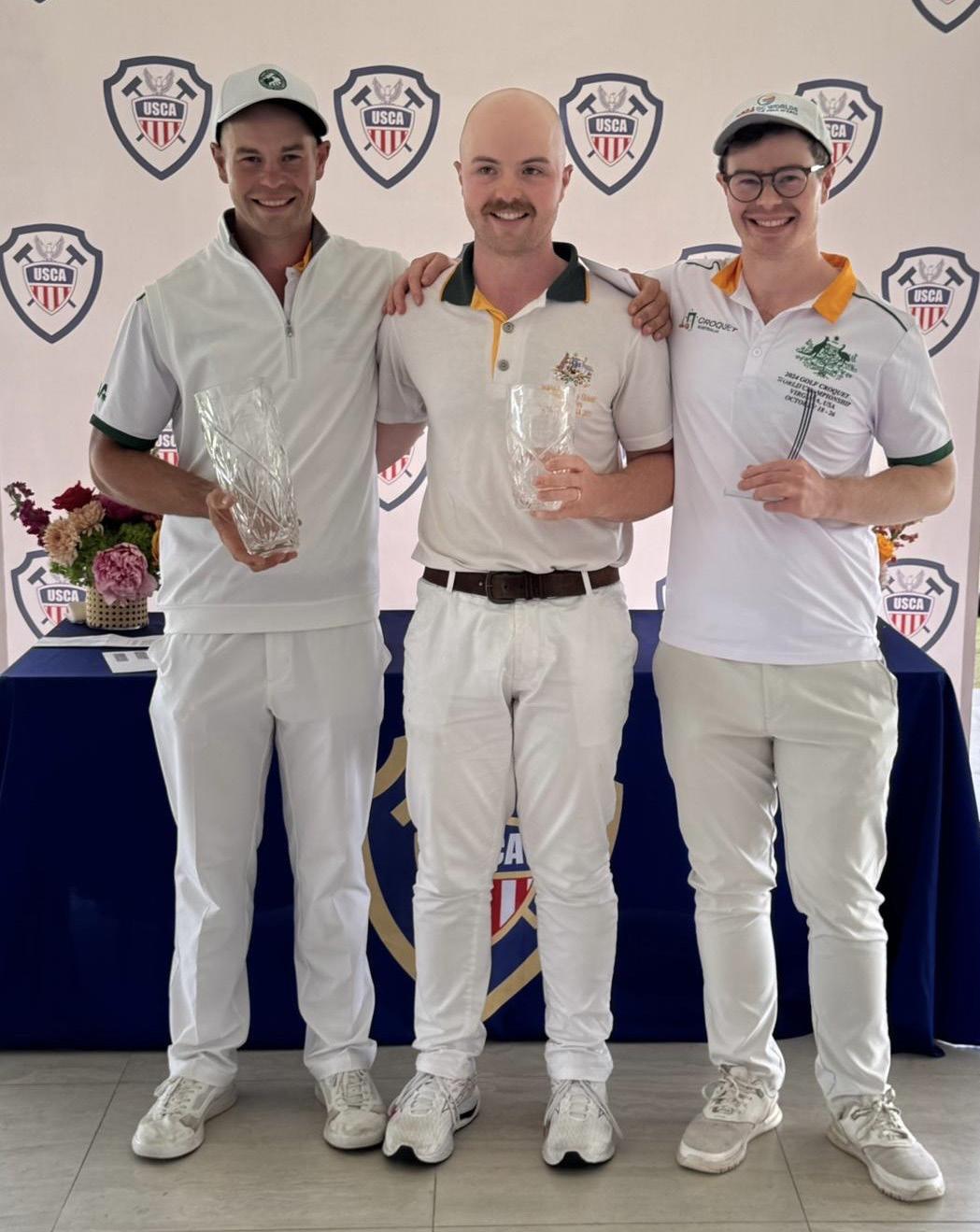
8 minute read
2025 US Open GC: Fletcher Brothers Dominate
By Bill Simmons
The USCA held the inaugural U.S. Open GC at the National Croquet Center (NCC) January 6-11, 2025. The international event began on January 6 with the ProAm doubles event. The Open started on January 7 with the semifinals and finals live-streamed. The Australian Fletcher brothers, Robert and Malcolm, prevailed over players from eight other countries to compete in the final against each other. Robert Fletcher, the number one ranked GC player in the world, is the first U.S. Open GC champion.
The concept for the new event took form a year ago when Bill Simmons, Regional Vice President of Florida, pledged to create a new winter competition for top players who were no longer eligible for the Florida Regional Golf Croquet Championship due to a rule change. Simmons pitched the idea to David McCoy, chairman of the Croquet Foundation of America. McCoy was immediately on board. Simmons then pitched the idea to Damon Bidencope, President of the USCA, and Bidencope in return asked Simmons to present it to the USCA Management Committee, who unanimously approved it, birthing the U.S. Open GC. The Open is a partnership between the USCA and CFA, underwritten by a fiveyear agreement to have the event at the NCC. With a lot of hard work, the next 12 months ensued and the rest, as they say, is history.
The first day ProAm was a fundraiser for the event. Sponsors paired up with top players from around the world to play in a doubles Swiss Tournament. For anyone who might think they are too old or too young, concerned about playing as a female versus a male or too new to croquet and reluctant to play in the ProAm, please reconsider for next year. Trevor Head, just nine years old and having just one year of experience in the sport, played with Edmund Fordyce, the third-ranked GC player in the world. Head shot the winning hoop in his last game. John Curington and David Maloof, the 10th-ranked player in the U.S., have known each other for years. They finished tied for third showing what older players can do. Eight of the 16 sponsors were women. Matthew Essick ranked first in the U.S. and seventh in the world, partnered with Bev Cardo and won the ProAm. Kyle Maloof, the eighthranked player in the U.S., partnered with Mary Galasso to place second in the ProAm. Lucia Halaby, playing croquet for less than a year, partnered with Stephen Morgan. The event finished with a delicious banquet dinner and awards. Pros and amateurs alike had a great day and many plan to play next year.
The ProAm competition was tough. Harry Dodge and Tate Russack, third seed, lost a tiebreaker to Matthew Essick and Bev Cardo, the first seed. One wicket separated them from being the Champion. Robert Fletcher and Bill Simmons, the second seed, came out on the wrong side of three tiebreakers ending their chance to play the first seed. Every team scored a win in this fun event.
Eight countries were represented in the U.S. Open GC. Flags from Australia, Canada, Egypt, England, Mexico, New Zealand, Spain and the U.S. were flown over the lawns. The first, third and seventh-ranked players in the world participated. Four of the first-ranked players in their countries competed. Fifteen of the players were ranked 10th or higher in their countries. It was a very competitive field.
The U.S. Open GC began block play on January 7. The top four players from each block advanced to the championship knockout playoff. The bottom four players competed in the plate. Block play was largely straightforward, with only a few closely contested exceptions. Brian Lozano won a playoff against Kent Lovvorn for fourth place in Block B. In Block C, Shane Hettler edged out Randy Cardo for fourth place in a tiebreaker. Matthew Essick was the only player to go undefeated in block play. Robert Fletcher, Zack Watson, Kyle Maloof,
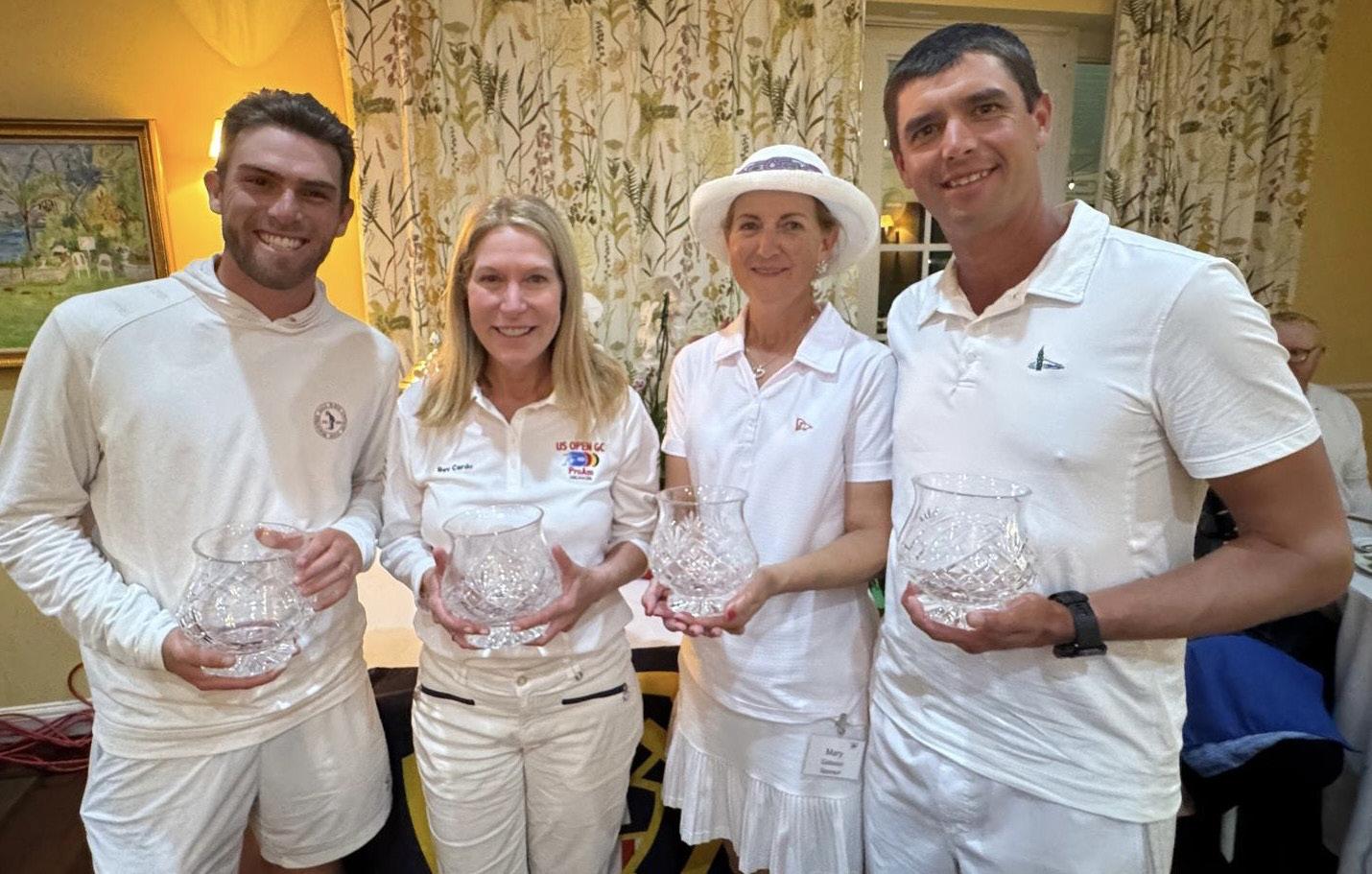
Tom Balding and Euan Burridge all suffered just one loss in their blocks. Five of these six players would advance to the quarterfinal. In the Championship knockout, eight of the 16 to qualify were Americans. Unfortunately, Tamer Hatata and Danny Huneycutt had to play each other, and David and Kyle Maloof had to play each other so only six could advance to the quarterfinal. Hatata and David Maloof were knocked out.
In the quarterfinal, Robert Fletcher retired Danny Huneycutt decisively. Kyle Maloof retired Greg Fletcher in game three on a tiebreaker. Tom Balding was knocked out by Malcolm Fletcher losing two tiebreaker games. Mathew Essick took Zack Watson out in three games. Up to this point, Watson and Balding had only lost three games. Both are young U.S. stars who continue to improve.
The semifinal was played as a best-of-five match. Kyle Maloof and Robert Fletcher went four games, one of which Maloof lost on a tiebreaker. Fletcher prevailed 3-1. Prior to the match, Maloof had only lost two games in the tournament. He is another rising young U.S. star.
Matthew Essick and Malcolm Fletcher went four games, one of which was a tiebreaker. Coming into the match, Essick had only lost one game. Essick got off to a slow start losing game 1. In game 2 he lost on a tiebreaker, but his play was improving. He won game 3 decisively 7-2, but Fletcher prevailed in game 4.
That meant the first U.S. Open GC final would feature the Fletcher brothers from Australia. Earlier in the event, Malcolm beat Robert in block play giving Robert his only loss. But in the final, Robert took the best-of-five match with three decisive wins 7-3, 7-4, 7-5. He methodically played his game of clearing and edging closer to the wicket before shooting. He rarely took a long, risky shot unless he had no choice. By contrast, Malcolm shot several long, risky hoops in an attempt to catch up or move ahead of Robert. Robert is the first name on the U.S. Open GC tournament perpetual trophy, and he won the $2,000 prize for first place.
While the championship knockout was in play, three other competition playoffs also took place. The plate for the bottom 16 was hard-fought as well. Randy Cardo, U.S., came out of block play with eight wins to face Rafael Hernandez-Alcala, Spain, with seven victories in the block. Hernandez-Alcala beat Cardo 7-4, 7-5 to claim the Plate. The Shield is a playoff for the losers of the Championship quarterfinal. Tom Balding, U.S., played Greg Fletcher, Australia. Balding won the Shield 3-1 dropping one game on a tiebreaker with Fletcher (7-1, 6-7, 7-4, 7-3).


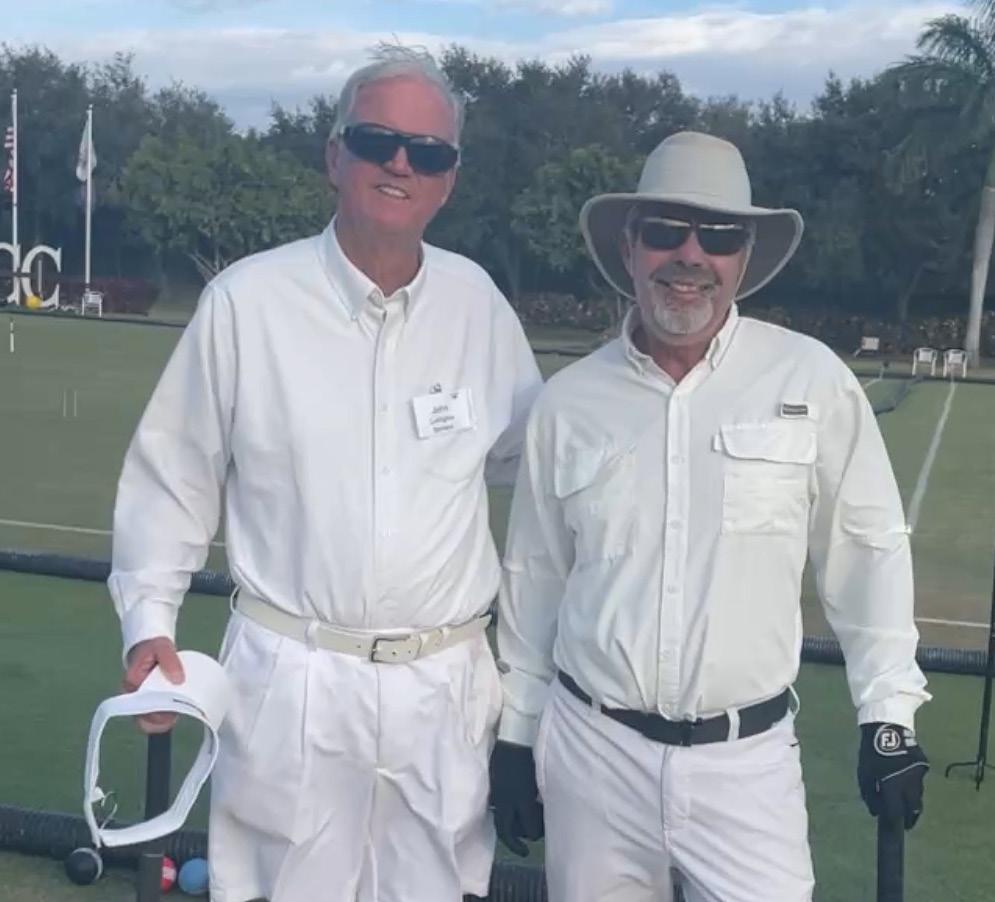
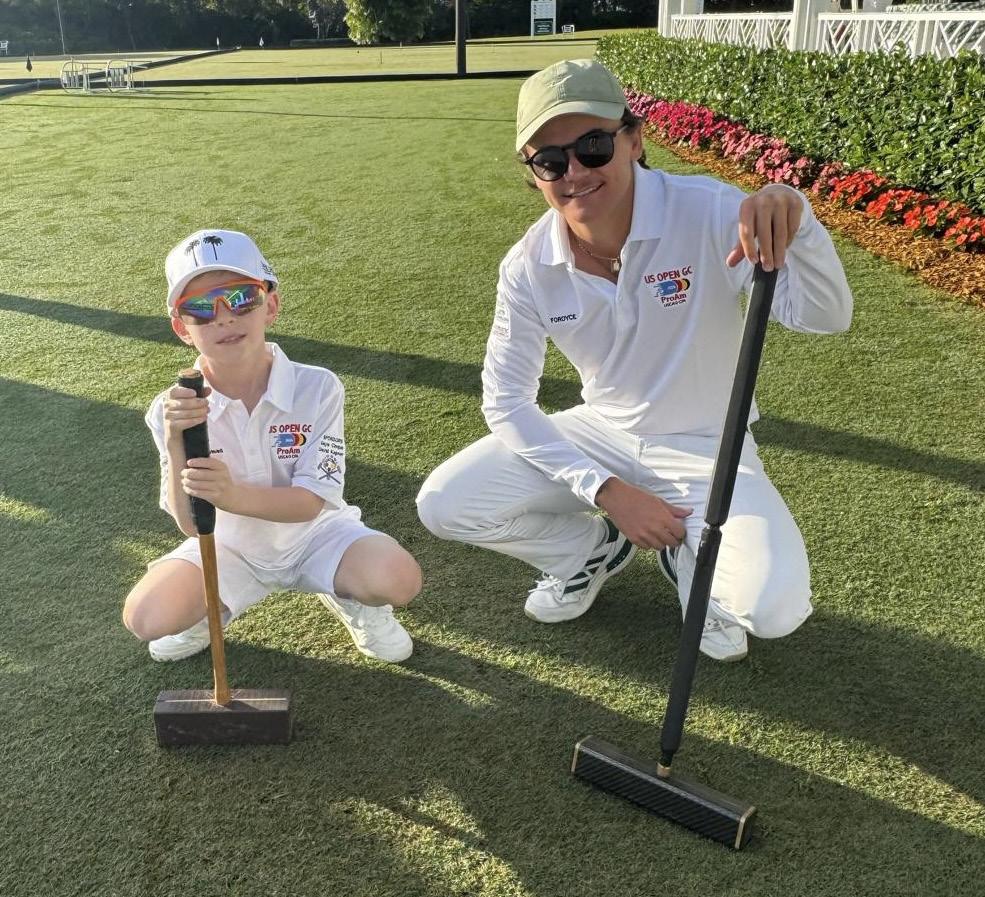
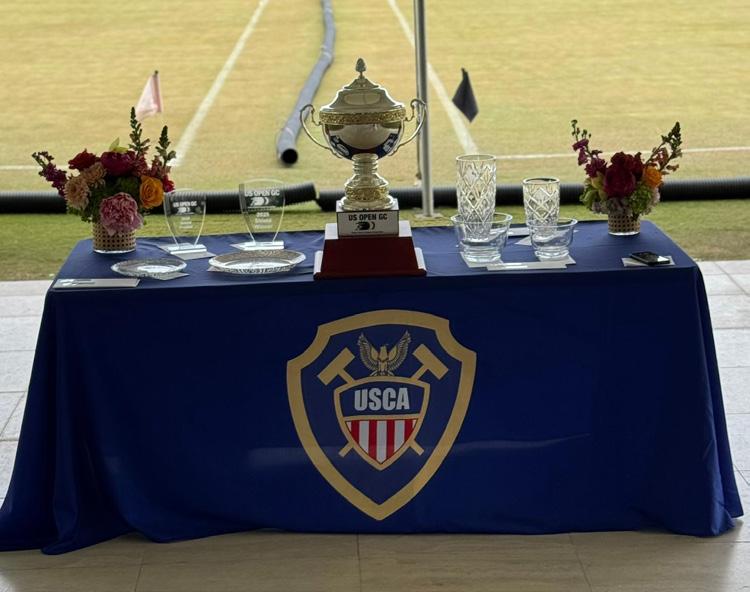
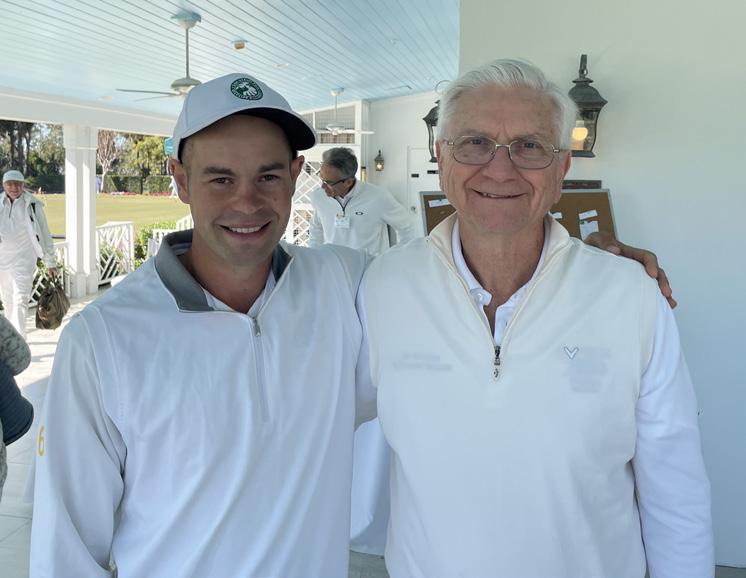
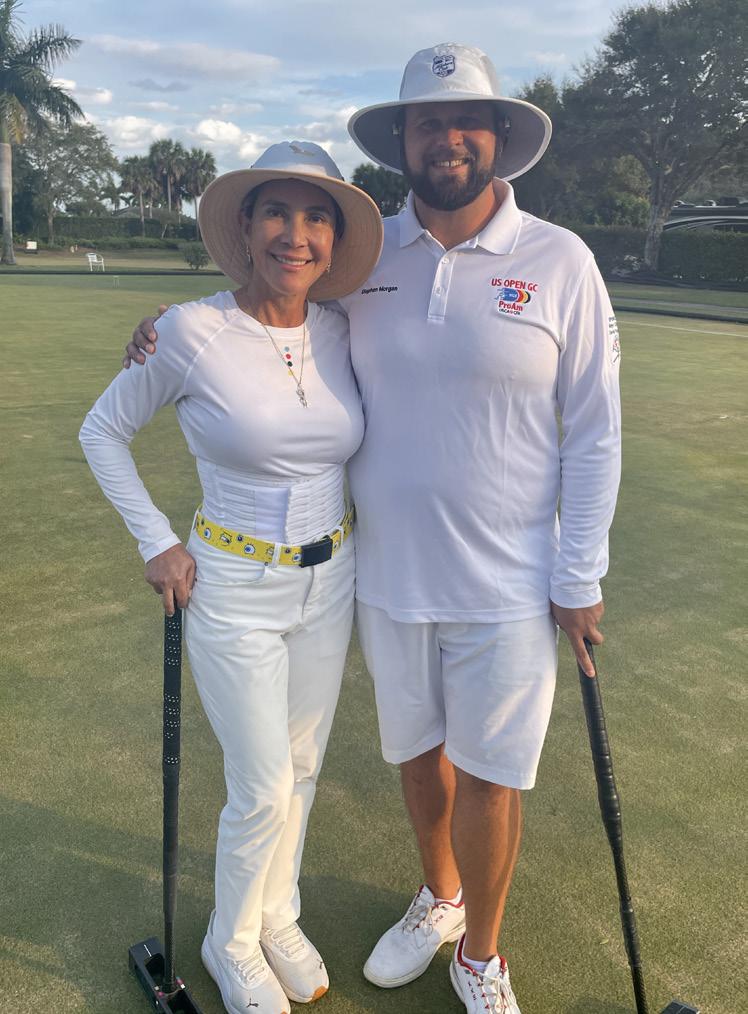
The Bowl is the playoff for the losers of the first-round Championship knockout. The final featured England’s Euan Burridge and Harry Dodge. Dodge took game one, but Burridge came back in games two and three to win the Bowl, 4-7, 7-5, 7-5.
YouTube live streaming of the event was the result of the work of many people. The player commentators did a great job. Russ Dilley expertly steers the effort assisted by the cameramen, Brian Hovis and John Graney. In the first four days, we had more than 8,000 views.
The U.S. Open GC will be the second week of February for the next four years at the NCC with next year’s being played February 9-14, 2026. For anyone who considered playing in the ProAm this year, now they know what was missed. Players are reserving spots now to play in this popular one-day event. It is a chance to play with the best. The National Croquet Center has a restaurant open to the public. Plan on coming next year for a day or a week to cheer on the American team. The Indian River Estates Croquet Club brought 15 of their players down to watch championship-level play and have lunch. Pete Anderson, from Shell Pointe Community in Fort Meyers, brought a bus load for the day to watch the tournament. Bring family, friends or clubs next year to watch. Join the USCA and get the latest news and opportunities on this event.




